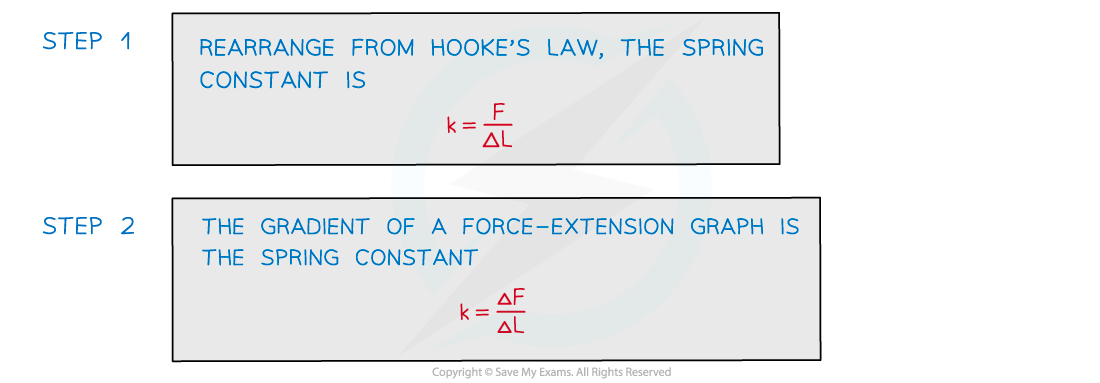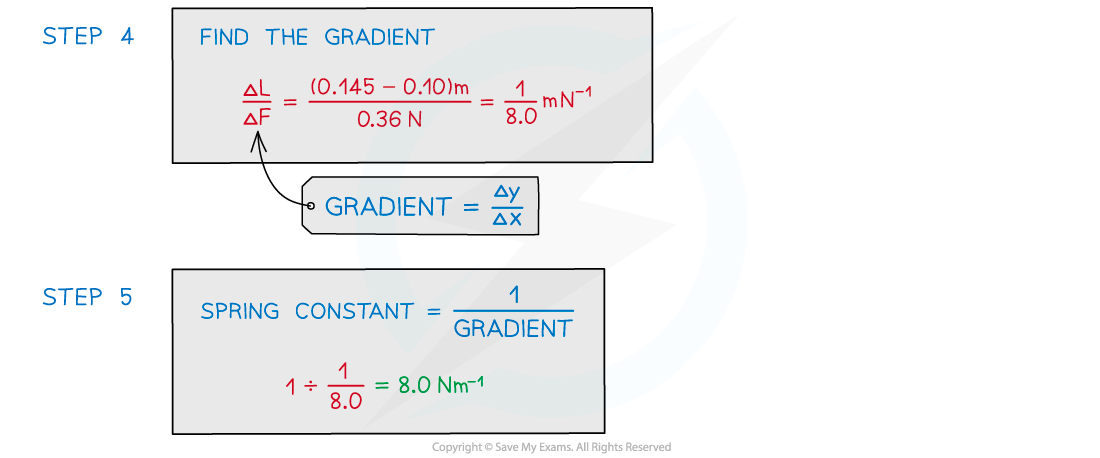Hooke's Law (AQA AS Physics) : Revision Note
Hooke's Law
When a force is applied to each end of a spring or wire, it stretches
This phenomenon occurs for any material with elasticity, such as a wire or a bungee rope
A material obeys Hooke’s Law if:
The extension of the material is directly proportional to the applied force (load) up to the limit of proportionality
This linear relationship is represented by the Hooke’s law equation:
F = kΔL
Where:
F = force (N)
k = spring constant (N m–1)
ΔL = extension (m)
The spring constant is a property of the material being stretched and measures the stiffness of a material
The larger the spring constant, the stiffer the material
Hooke's Law applies to both extensions and compressions:
The extension of an object is determined by how much it has increased in length
The compression of an object is determined by how much it has decreased in length
The extension, ΔL, is the difference between the unstretched length and the stretched length
extension = stretched length − unstretched length

Stretching a spring with a load produces a force that leads to an extension
Force–Extension Graphs
The way a material responds to a given force can be shown on a force-extension graph
Every material will have a unique force-extension graph depending on how brittle or ductile it is
A material may obey Hooke's Law up to a point
This is shown on its force-extension graph by a straight line through the origin
As more force is added, the graph starts to curve slightly as Hooke's law no longer applies

The Hooke's Law region of a force-extension graph is a straight line. The spring constant is the gradient of that region
The key features of the graph are:
The limit of proportionality
Beyond the limit of proportionality, Hooke's law is no longer true
The extension is then no longer proportional to the applied force
Elastic limit
Beyond the elastic limit, the material will no longer return to its original length
The gradient
This only applies to the linear portion of that graph where Hooke's law is obeyed
The gradient of a force-extension graph is equal to the spring constant
The gradient of an extension-force graph is
Worked Example
A spring was stretched with increasing load.
The graph of the results is shown below.

What is the spring constant?
Answer:



Examiner Tips and Tricks
Always double check the axes before finding the spring constant as the gradient of a force-extension graph.
Exam questions often swap the force (or load) onto the x-axis and extension (or length) on the y-axis. In this case, the gradient is not the spring constant, it is instead.

You've read 0 of your 5 free revision notes this week
Sign up now. It’s free!
Did this page help you?
